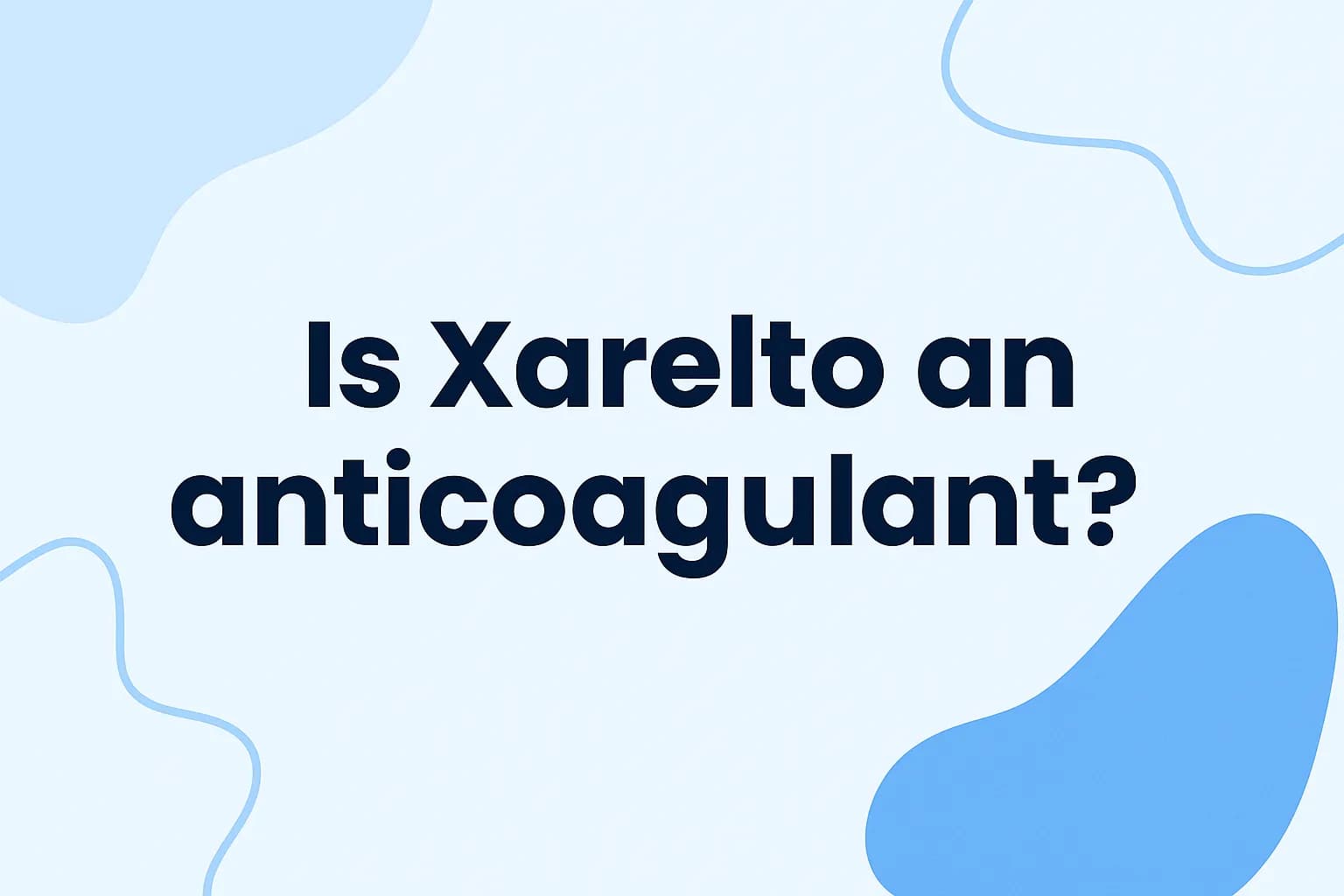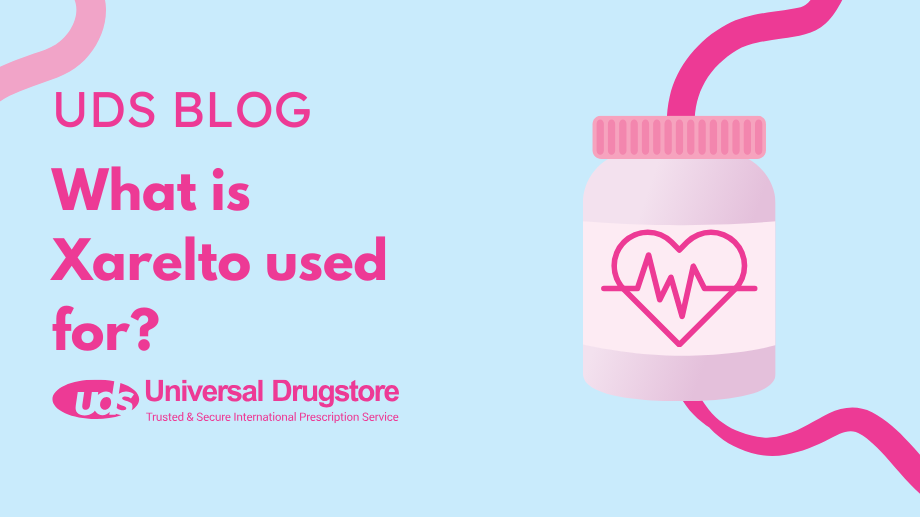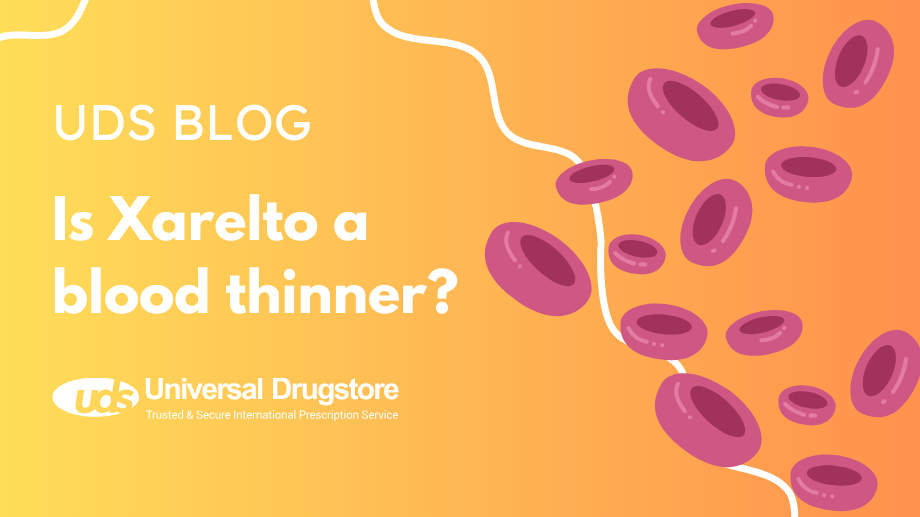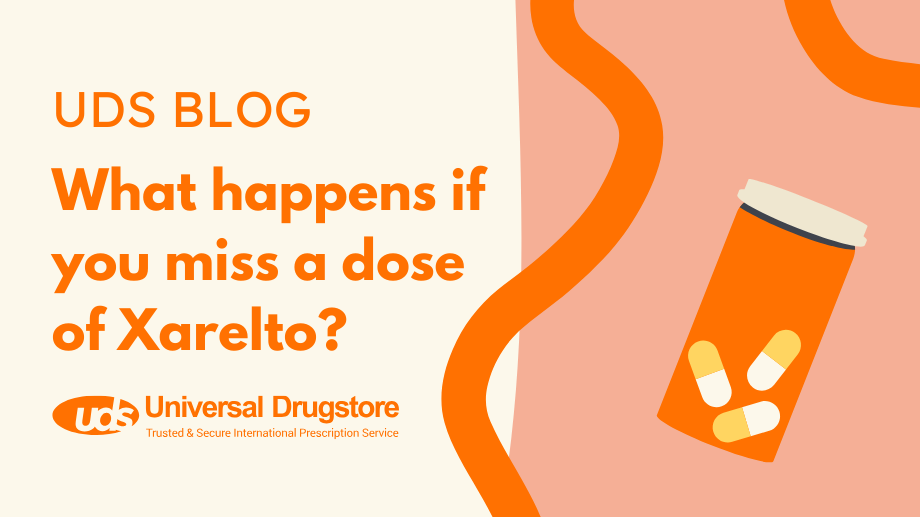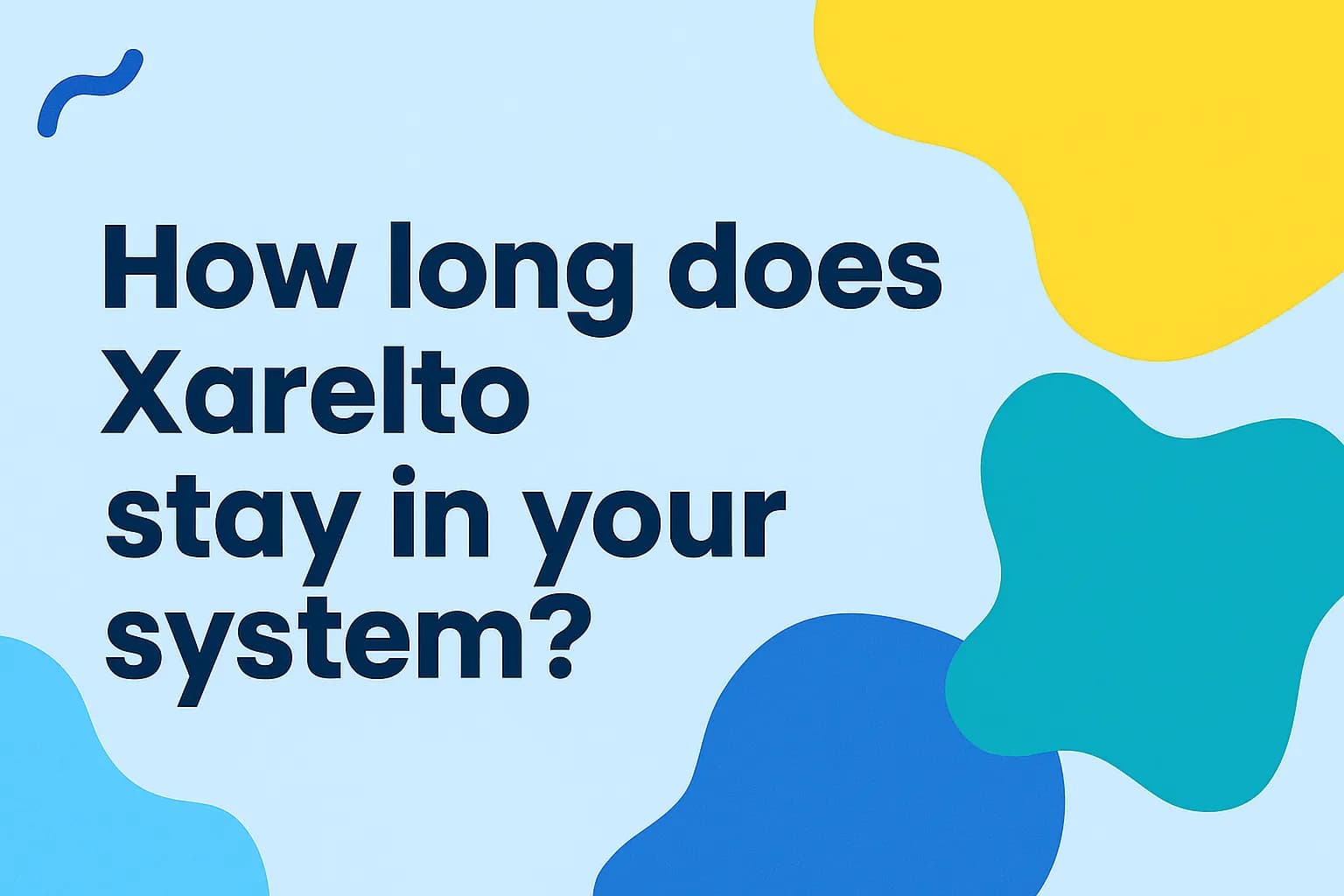How long does Xarelto stay in your system?
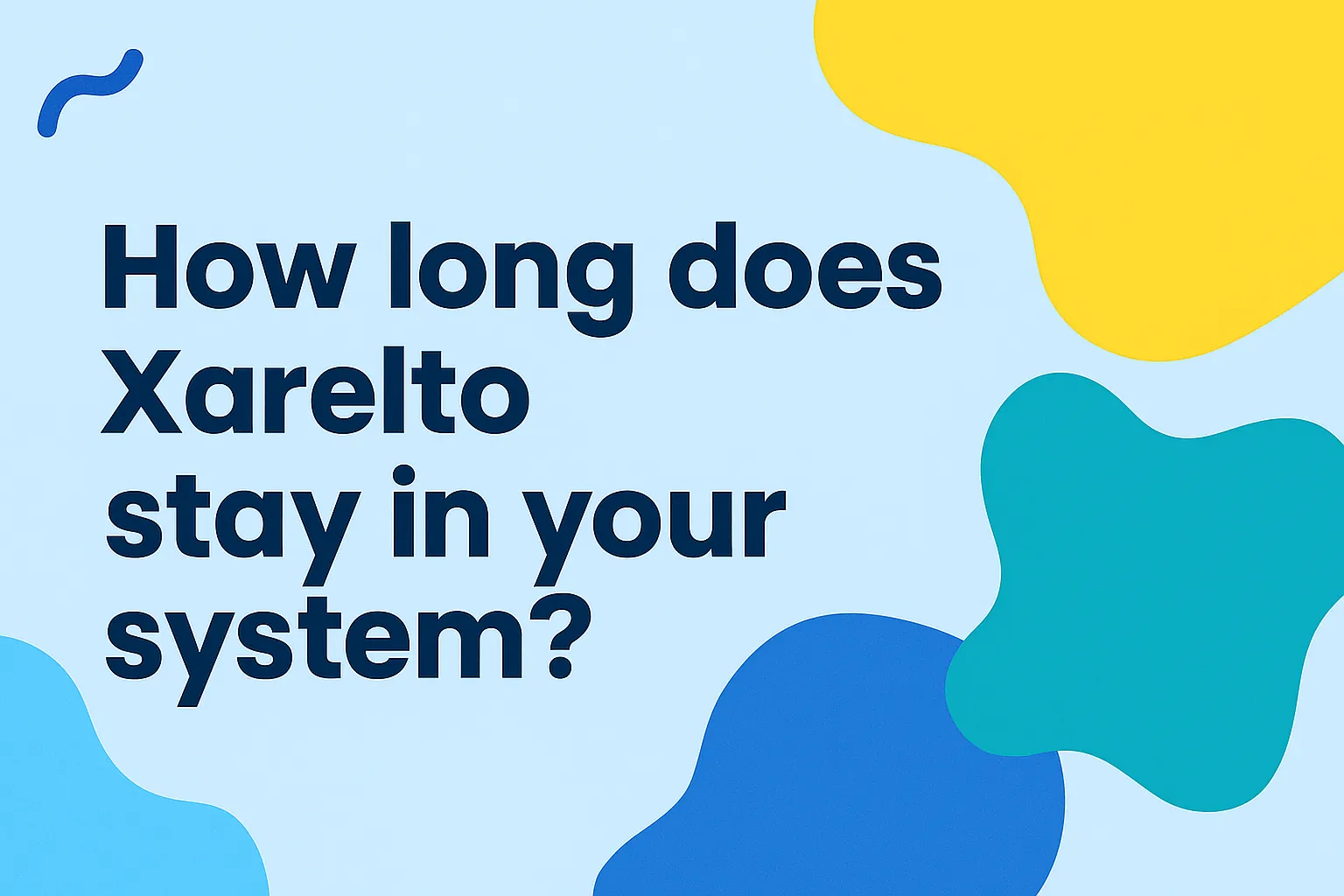
Xarelto (rivaroxaban) is a prescription drug that is classified as an anticoagulant or blood thinner. It is a once-daily medication that is an effective treatment option to help treat blood clots and reduce your risk of heart attack and stroke. Xarelto starts to work quickly after taking a dose and will reach its full blood-thinning effect within 2 to 4 hours.
Xarelto has a half-life of 5 to 9 hours in healthy people between 20 to 45 years of age. A half-life is the amount of time it takes for your body to get rid of half a dose of Xarelto. In most cases, a drug stays in your system for around 5 half-lives. So it may take Xarelto 25 to 45 hours to be out of your bloodstream if you are in this age range.
In older people, Xarelto is removed more slowly. In those 60 to 76 years of age, Xarelto’s half-life is 11 to 13 hours. So Xarelto may stay in your system for 55 to 65 hours if you are an older adult.
Keep reading as we explain what Xarelto is, what it’s used for, how it works, its side effects, what happens when you stop taking it, drug interactions, and answer some frequently asked questions.
Xarelto FAQs
What conditions are Xarelto prescribed to treat?
Xarelto works by inhibiting the formation of blood clots, which can prevent heart attacks and strokes, especially for those at high risk.
It is used in adults to:
- Reduce the risk of stroke and blood clots with non-valvular atrial fibrillation
- Treat and prevent deep vein thrombosis (DVT)
- Treat and prevent pulmonary embolism (PE)
- Lower the risk of cardiovascular events with coronary or peripheral arterial disease when taken with low-dose aspirin
- Prevent PE and DVT after joint replacement surgery
- Reduce the risk of DVT or PE from recurring
It is used in children to:
- Treat and prevent DVT or PE after injectable blood thinners
- Prevent blood clots in those with congenital heart disease after a Fontan procedure
How does Xarelto work?
Blood clots form through the coagulation cascade and platelet activation. Xarelto blocks factor Xa, an enzyme key to the clotting process. This reduces your blood’s ability to form clots, helping prevent conditions like DVT, PE, and strokes from AFib. Xarelto does not dissolve existing clots.
How do you take Xarelto?
Follow your doctor’s instructions exactly. Xarelto is taken by mouth once or twice daily, usually with food. For AFib, take once daily with your evening meal.
What happens if you miss a day of Xarelto?
- If taken once a day (adults): take missed dose same day, do not double next dose
- If taken twice a day (adults): take missed dose as soon as possible, even if taking 2 doses together
- For children: follow your doctor’s instructions based on the frequency prescribed
If needed, crush the tablet and mix with applesauce, followed by a full meal.
What are the side effects of Xarelto?
Common side effects include:
- Adults: nosebleeds
- Children: bleeding, cough, vomiting, stomach virus, rash
Other possible side effects:
- Back pain
- Dizziness
- Headache
- Fatigue
- Stomach pain
- Arm or leg pain
- Anxiety
- Trouble sleeping
Serious side effects may include:
- Severe bleeding (nosebleeds, unusual bruising, blood in urine/stool, coughing/vomiting blood)
- Allergic reactions (hives, breathing issues, swelling)
- Spinal/epidural clots with symptoms like back pain or loss of bladder/bowel control
Report side effects to the FDA at 1-800-FDA-1088 or www.fda.gov/medwatch.
Are there drug interactions with Xarelto?
Yes. Drug interactions include:
- Other anticoagulants (heparin, aspirin, NSAIDs)
- CYP3A4 inhibitors (erythromycin, ketoconazole, ritonavir)
- CYP3A4 inducers (rifampin, carbamazepine, phenytoin, St. John’s wort)
- SSRIs and SNRIs (increased bleeding risk)
Boxed Warning
- Stopping Xarelto too soon can increase the risk of clots
- Risk of spinal/epidural hematomas leading to paralysis during certain procedures
Always weigh the risks with your doctor before stopping treatment or undergoing spinal procedures.
What precautions are there with Xarelto?
- Bleeding disorders
- Kidney or liver disease
- Antiphospholipid syndrome
- Artificial heart valves
- Planned surgeries or dental work
- Pregnancy or breastfeeding
Why take Xarelto at night?
If treating AFib, take Xarelto with your evening meal. This improves absorption and consistency.
Do you need routine blood tests while on Xarelto?
No. Unlike warfarin, Xarelto does not require routine INR testing. Its effect is predictable regardless of age, weight, or diet.
Can Xarelto cause blood in the urine?
Yes, bleeding is a known side effect. Seek help immediately if your urine is pink, red, or brown.
What is the elimination half-life of Xarelto in the body?
- 5 to 9 hours in adults aged 20–45 (total time in system: 25 to 45 hours)
- 11 to 13 hours in adults aged 60–76 (total time in system: 55 to 65 hours)
Related medications
- Eliquis (apixaban)
- Pradaxa (dabigatran)
- Arixtra (fondaparinux)
- Savaysa (edoxaban)
- Coumadin (warfarin)
- Lovenox (enoxaparin)
